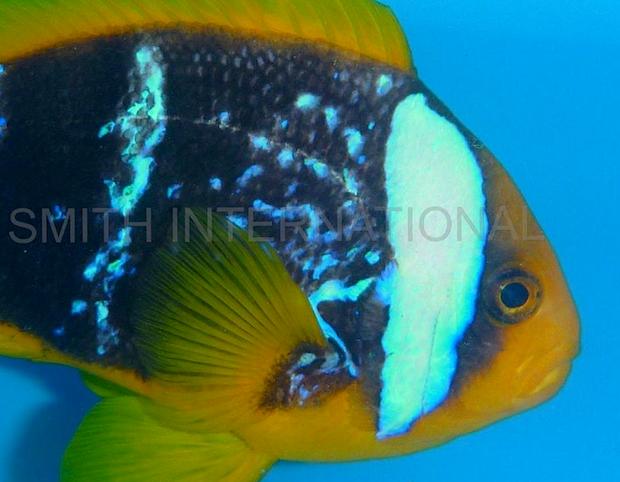My jaw hit the floor when I saw this fish – a wild, yellow-tailed Fijian Blue Stripe Clownfish (Amphiprion chrysopterus) collected this week and first shared by Walt Smith International. What has my mind blown is this – the patterning of bars on the mid-stripe and tail-stripe are truly remarkable and bear an uncanny resemblance to the broken up patterning that appears on the PNG-sourced Lightning Maroon Clownfish. Thus, the question demands to be asked – is this the same base mutation as “Lightning” in Maroon, now seen in another species of clownfish?

Don’t be so quick to dismiss it…”Gladiator” (in Ocellaris) is probably a dead on analogous mutation to “Picasso” (in Percula)…and that mutation is now potentially being found in numerous other species of clownfish too in both wild and captive popluations (I have strong suspicions that various “Galaxy” and “White” forms of Clarkii, Bicinctus, Polymnus, Sebae, all are the same basic “breaking” of the wild type stripe genetics). Nevermind the obvious examples of how ubiquitous things like albinism are. It makes complete sense that within a group of related species, a specific “break” or “mutation” in some critical gene would create similar results when it occurs in different species of that group.
Obviously, I hope such a stunning fish makes it’s way into a breeding program, and hopefully whoever winds up with this beautiful fish will be as transparent about the process and results as I had been with the Lightning Maroon. My curiosity is overwhelmed…to have this fish simply go to the highest bidder, a fish collector, just isn’t right. Frankly, the Blue Stripe Clownfish as a species was long overdue for a reason to pursue it in captive breeding (because yes, it is a) difficult and b) the babies are generally very plain and uncolorful). The notion that this patterning could be seen in captive offspring again might more than make up for the dull juvenile color phase!



